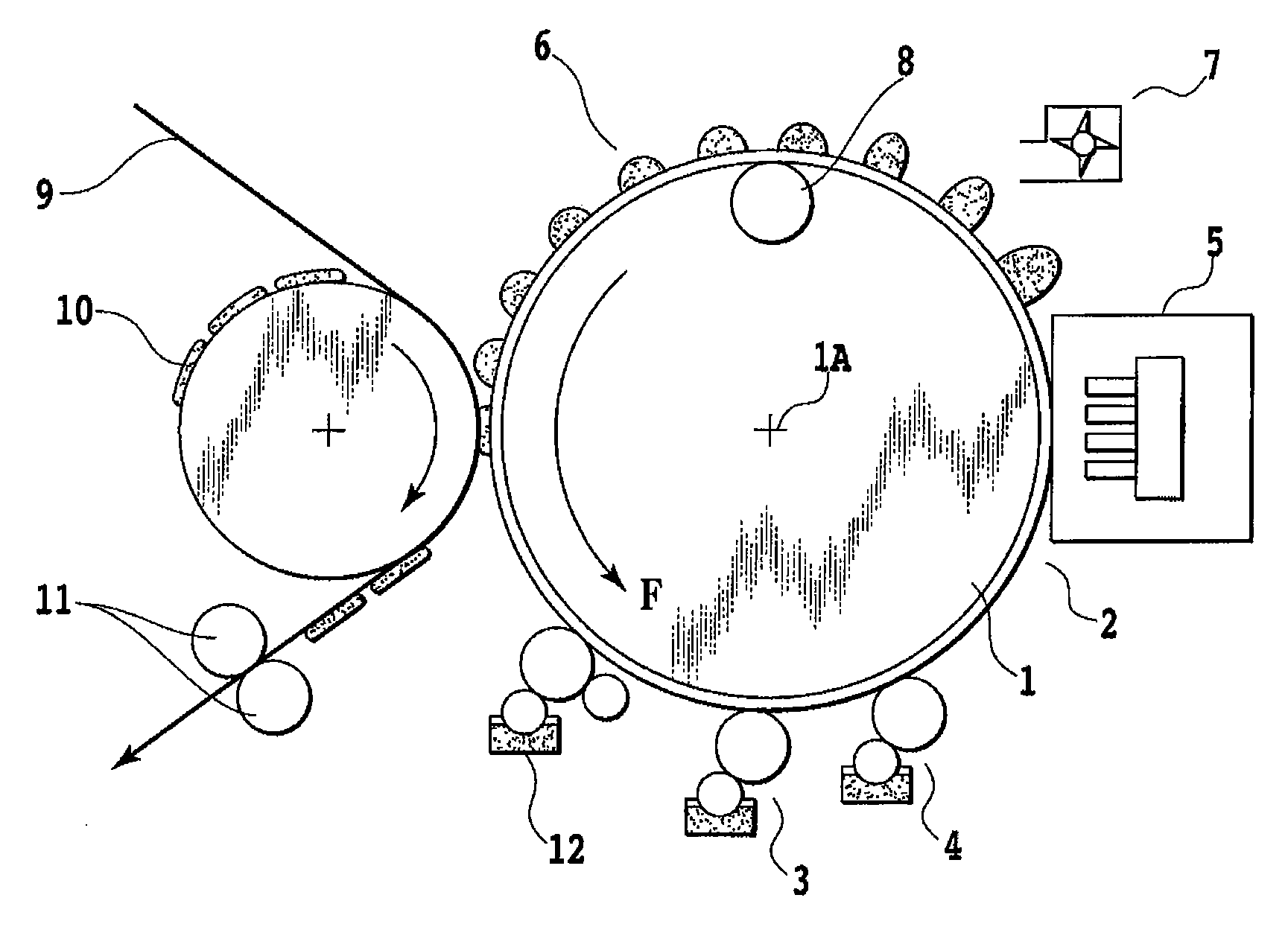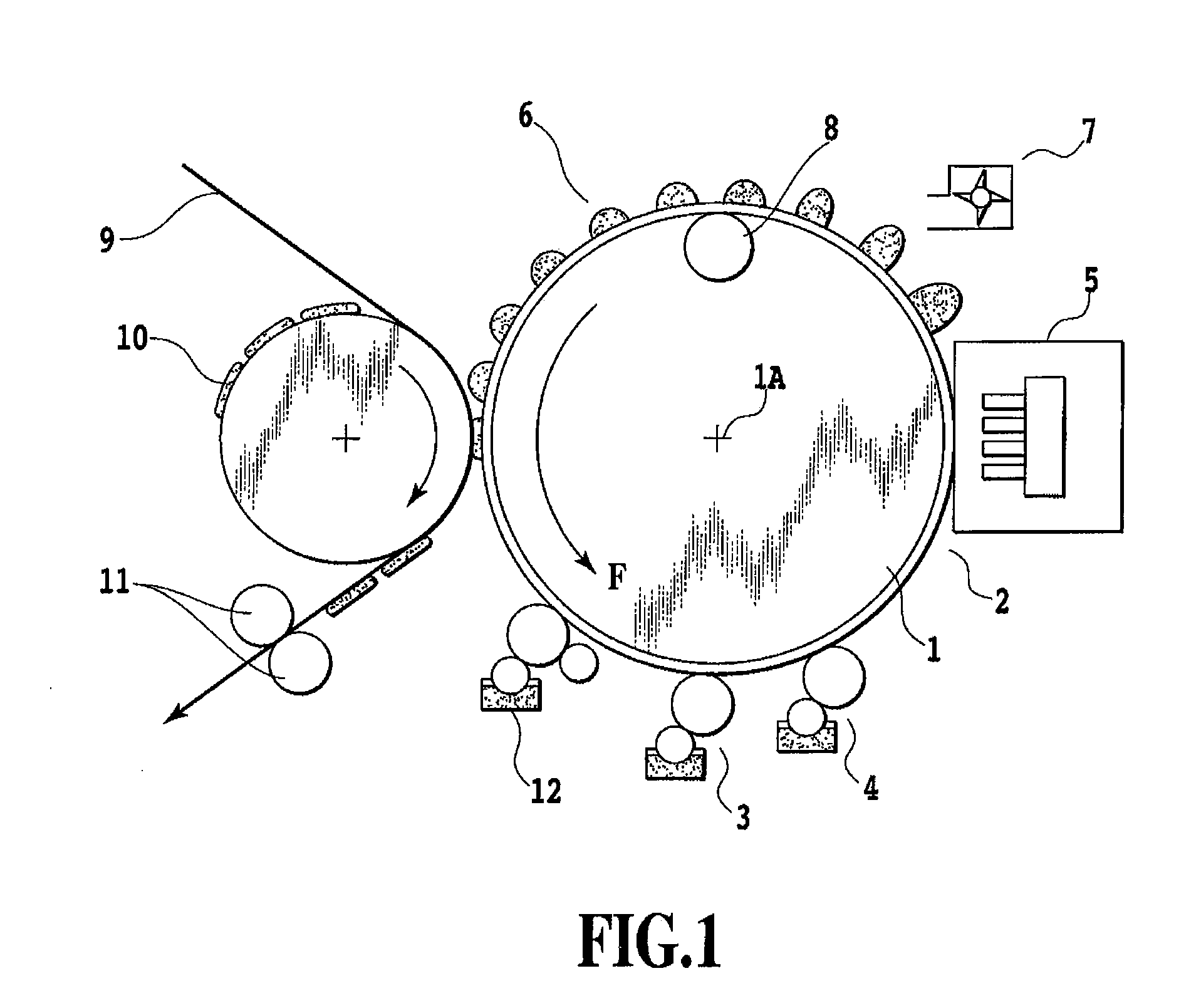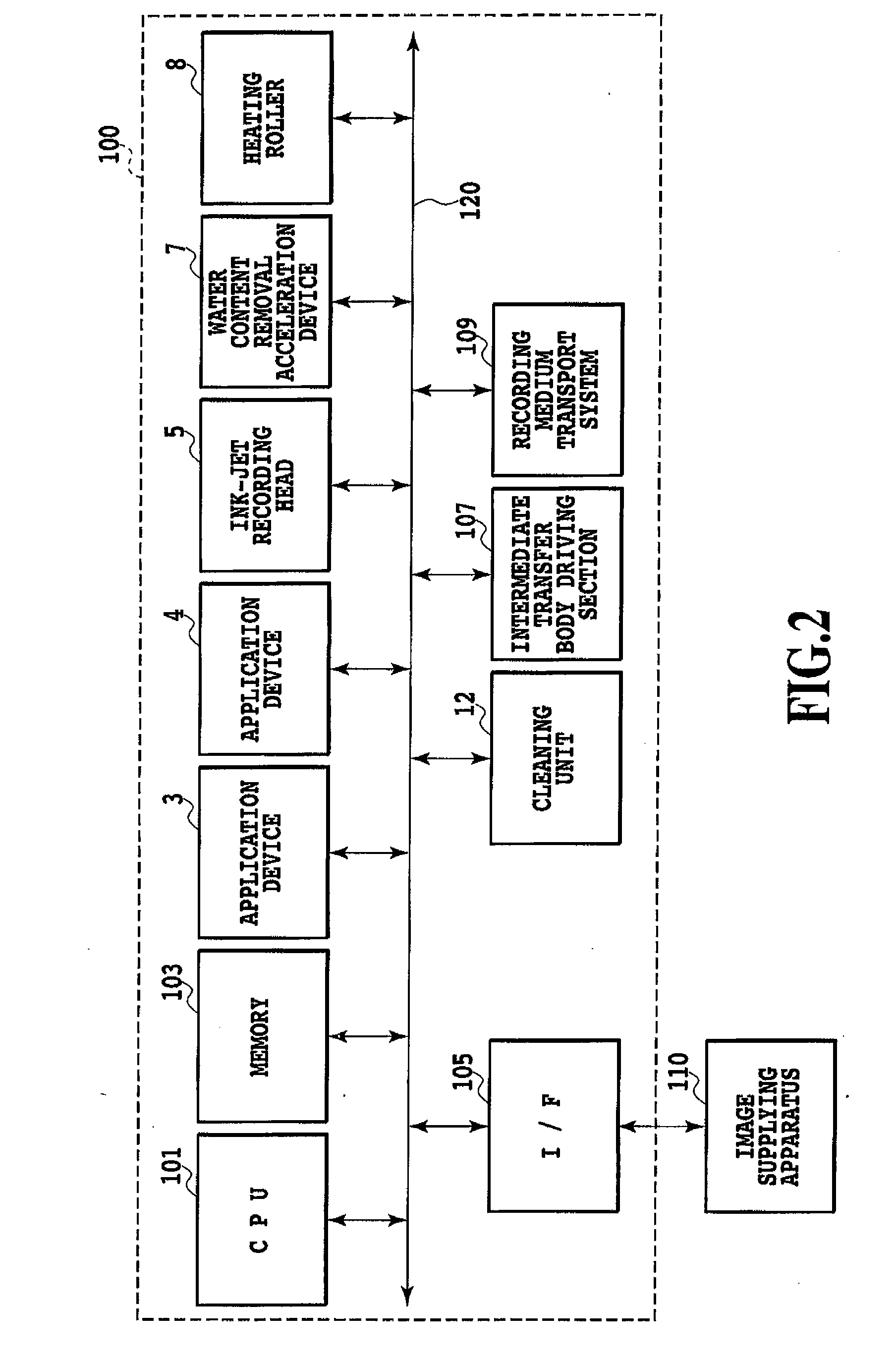Method of producing recorded product (printed product) and image forming apparatus
a technology of image forming apparatus and recorded product, which is applied in the direction of measuring apparatus components, printing, instruments, etc., can solve the problems of reducing the quality of an image, requiring a large amount of energy, and consuming a lot of energy, and achieves a high transfer rate and high quality
- Summary
- Abstract
- Description
- Claims
- Application Information
AI Technical Summary
Benefits of technology
Problems solved by technology
Method used
Image
Examples
example 1
(4.1) Example 1
[0093](a) Production of Transfer Body
[0094]In the present Example, NBR was used as the raw material of intermediate transfer body. Only a small amount of oil component oozes in a case of a usual non-treated NBR. For this reason, 10% of a silicone oil (TSF451-100 available from GE Toshiba Silicon Co., Ltd., surface tension 20.9 mN / m) was added to a raw material rubber. Furthermore, 7% of a surfactant (SURFLON S121 available from SEIMI CHEMICAL Co., Ltd, surface tension 16.2 mN / m-water 0.1%) was added to the raw material rubber. A vulcanizing agent, an accelerator, an anti-aging agent, a reinforcement agent, a filler, a plasticizer, an adhesive agent and a coloring agent were added to the above mixture in a usual blending ratio which provides a rubber hardness degree of 60°. The mixture was then refined. The surface layer of the intermediate transfer body was produced by forming the refined raw material rubber of 0.2 mm thick in a planar form on an aluminum plate (base)...
example 2
(4.2) Example 2
[0098](a) Production of Transfer Body
[0099]In the present example, a mirable type silicone rubber having a rubber hardness degree of 50° (KE505-U available from Shin-Etsu Chemical Co., Ltd.) was used as a raw material of an intermediate transfer body. This silicone rubber generates sufficient oil bleed even if an oil is not added. For this reason, only 10% of a water-soluble surfactant (SURFLON S141 available from SEIMI CHEMICAL Co., Ltd, surface tension 15.5 mN / m-water 0.1%) was added to the raw material rubber. A minute amount of an oil component which oozes from the silicone rubber has a surface tension of about 22 mN / m. The surface tension of the added water-soluble surfactant is sufficiently lower than this value.
[0100]A predetermined amount of a vulcanizing agent was added to the above rubber raw material, and this mixture was refined. Then, the product was formed in a planar form with a thickness of 0.2 mm on an aluminum plate (base) with a thickness of 0.2 mm ...
example 3
(4.3) Example 3
[0104](a) Production of Transfer Body
[0105]In the present Example, a two-liquid RTV type silicone rubber having a rubber hardness degree of 40° (KE-12 available from Shin-Etsu Chemical Co., Ltd.) was used as a raw material of an intermediate transfer body. This silicone rubber generates sufficient oil bleed even if an oil is not added. For this reason, only 10% of a water-soluble surfactant (SURFLON S131 available from SEIMI CHEMICAL Co., Ltd, surface tension 15.5 mN / m-water 0.1%) was added to the raw material rubber. An oil component which oozes from the silicone rubber has a surface tension of about 20 mN / m. The surface tension of the added water-soluble surfactant is sufficiently lower than this value.
[0106]A predetermined amount of a curing agent was added to the above rubber raw material, and this mixture was kneaded. Then, the product was applied and formed in a planar form with a thickness of 0.2 mm on an aluminum plate (base) with a thickness of 0.2 mm which h...
PUM
| Property | Measurement | Unit |
|---|---|---|
| surface tension | aaaaa | aaaaa |
| thickness | aaaaa | aaaaa |
| driving frequency | aaaaa | aaaaa |
Abstract
Description
Claims
Application Information
 Login to View More
Login to View More - R&D
- Intellectual Property
- Life Sciences
- Materials
- Tech Scout
- Unparalleled Data Quality
- Higher Quality Content
- 60% Fewer Hallucinations
Browse by: Latest US Patents, China's latest patents, Technical Efficacy Thesaurus, Application Domain, Technology Topic, Popular Technical Reports.
© 2025 PatSnap. All rights reserved.Legal|Privacy policy|Modern Slavery Act Transparency Statement|Sitemap|About US| Contact US: help@patsnap.com



